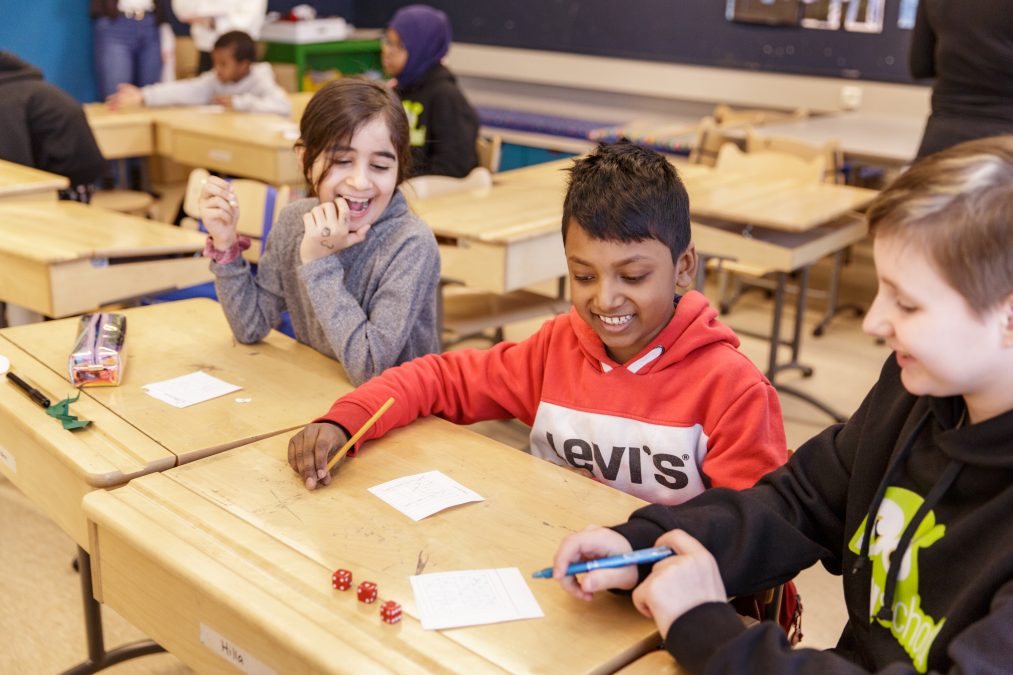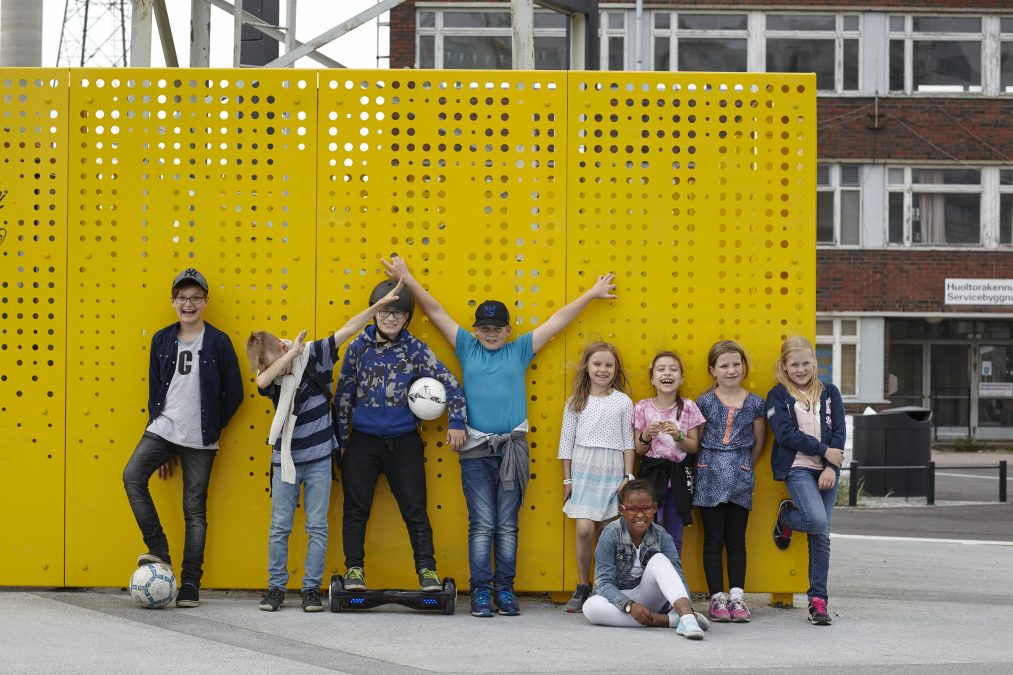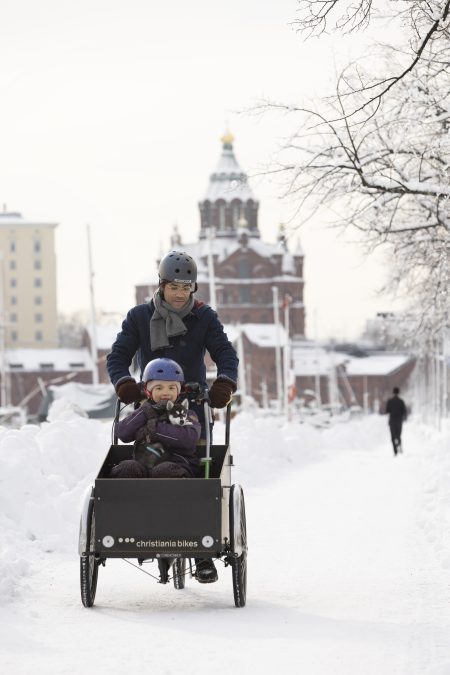Schools for children in Helsinki
On this page
- Starting school with no Finnish or Swedish skills
- Instruction in different languages
- Primary school (age 7-12)
- Lower secondary school (age 13-15)
- Private schools in Helsinki

Schools in Helsinki provide a great education
Children in Finland start comprehensive school in the year they turn seven. To see how schools for children in Helsinki fit into the Finnish education system, see our School journey timeline.
Starting school with no Finnish or Swedish skills
Schools for children in Helsinki provide assistance to little ones who don’t speak Finnish or Swedish. Children who have arrived in Helsinki from abroad and are registered residents of the city are eligible for a period of preparatory education to ease their transition into the Finnish school system. This preparatory education includes language instruction and depending on the child’s age and needs, extra support from a staff of education professionals.
Every public school in Helsinki has preparatory education for 7 and 8 year olds, but children aged 9-16 may have to travel to another school for this service. Some schools also employ a multilingual instructor who offers guidance in multiple languages to children and their families.
The city encourages families to use their mother tongue actively in their homes and thus preserve their multilingualism. Therefore, the city offers schoolchildren lessons in their native language two hours a week. This instruction is available in close to 40 languages at no charge. Groups usually need 10 students to start, so some students may need to go to another school for these classes. If you have questions about preparatory education or mother tongue instructions, please send an email to valmistavaopetus@hel.fi.
Instruction in different languages
Public schools in Helsinki start teaching foreign languages in grade one. After this, primary school students are offered the possibility to start learning another foreign language in grade three and four. Students in Finnish-language schools must start learning the Swedish language by grade six, and the reverse is true in Swedish-language schools. Students may follow one of two tracks when it comes to studying Finnish or Swedish: studying the language as a mother tongue or as a second language.
Some schools in Helsinki feature what is referred to as bilingual instruction, where 25-50 per cent of the teaching is in the target language and the rest in Finnish. Helsinki schools offer bilingual education in Chinese, English, Estonian, North Sami, Russian, Spanish and Swedish. Finnish-English Finnish-English bilingual instruction is available in six public primary schools and six lower secondary schools (grade 7-9).
In addition to this, close to a dozen primary schools in the city provide English-enriched basic education, where 10 and 25 per cent of the daily instruction is in English.
Looking for schools in Helsinki that teach in English? The City of Helsinki has prepared plenty of helpful material that can help explain your options. Please click on the links below to learn more about Helsinki’s basic education options for speakers of English and other languages.
Primary schools in Helsinki (age 7-12)
Primary schools for children in Helsinki (grades 1 through 6) provide all of the necessary school supplies and a warm and nutritious daily lunch to students free of charge. All that families need to supply is a rucksack for books, a pencil case and appropriate clothes for outdoor and indoor exercise.
The school day is quite short in first and second grade. For this reason, many children participate in morning or after-school activities at the school or a nearby playground. The city also provides more after-school activities in cooperation with local organisations and churches.
In grades three to six, the school days start to become longer, with a schedule that varies each day. The selection of classes grows wider and the children begin to receive more homework. As a rule, schoolchildren are expected to do their homework independently. The role of parents and guardians is to support the child’s school-going and attend events organised by the school.

What is Wilma?
Helsinki uses a web interface called Wilma for facilitating teacher-parent communication and monitoring pupil performance. School bulletins are also shared there. You will be given instructions on how to access the service when your children start their studies.
Transport
The City of Helsinki encourages children to walk or bike to school. It is quite safe and several studies have shown that the daily exercise improves school performance. Children with a disability can apply for special school transportation.
Schoolchildren in grades 1-6 that live more than two kilometres from their local school may be eligible for a student travel card to use on public transport. This extends to three kilometres for young people in grades 7-9. See our section on Public transport for more information on the city’s safe and reliable service.
Curriculum
Schools for children in Helsinki follow the national core curriculum for basic education, which means that they all teach the same compulsory subjects. Finland prides itself on school system equity. Learning results and outcomes tend to be the same across the country.
When children are in their second year of primary school, they can apply for what is called a weighted-curriculum programme that they can attend in grades 3-6. These programmes provide about two extra hours of instruction each week in a particular subject, such as art, music or PE. One school in Helsinki has a weighted-curriculum programme in music that starts already in the first grade.
Teachers and support services
All schoolteachers in Finland hold master’s degrees and have completed extensive teacher training. In addition, each school has one or more special teachers who support students who may need extra help or have special needs. School doctors, nurses, psychologists and social workers are also on hand to offer assistance when needed. Contact your child’s teacher or the school principal at any time with questions or concerns.

What are parent meetings and parents’ evenings?
A parent meeting is a chance to discuss school matters with your child’s teacher. Parents’ evenings are larger events about school proceedings. Don’t let language barriers keep you from attending; the school will be happy to arrange an interpreter.
Lower secondary school in Helsinki (age 13-15)
After sixth grade, children continue on to lower secondary school (yläkoulu or yläaste), or grades 7 through 9. In some neighbourhoods, primary and lower secondary schools are in the same building, while in others they are separate.
Many more schools in Helsinki offer weighted curriculum education starting in the 7th grade. Young people that wish to attend these programmes must sit an aptitude test the year prior.
School doctors, nurses, psychologists and social workers are available to lower secondary school students, and the city’s extensive youth services provide many different kinds of activities and support for this age group.
Before they finish their three years of lower secondary school, students in Finland must decide whether they wish to continue on to general upper secondary school (lukio) or vocational school (ammattikoulu or, more familiarly, amis). Lower secondary school guidance counsellors help students to make the choice that suits them best.
If a young person does not have sufficient skills (including language skills) after ninth grade to move on to upper secondary education, or if they need help to determine their continued study plans, they can apply for preparatory training for an upper secondary education (TUVA).
Private schools in Helsinki
There are about two dozen private schools for children in Helsinki. Some serve a certain language group, such as the Deutsche Schule, the Finnish-French School and the Finnish-Russian School. There are also several international schools, such as the International School of Helsinki and the European School of Helsinki. A few schools in the metropolitan area also offer IB programmes. Private schools in Helsinki charge tuition.
See the city’s webpages on Basic education in different languages for more information about the different schools for children in Helsinki and its surrounding cities.